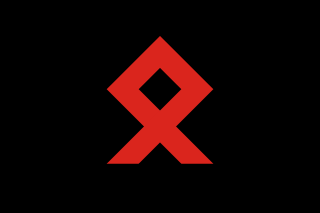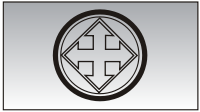
The National Front (NF) is a fascist political party in the United Kingdom. It is currently led by Tony Martin. A minor party, it has never had its representatives elected to the British or European Parliaments, although it gained a small number of local councillors through defections and it has had a few of its representatives elected to community councils. Founded in 1967, it reached the height of its electoral support during the mid-1970s, when it was briefly England's fourth-largest party in terms of vote share.
The League of Empire Loyalists (LEL) was a British pressure group, established in 1954. Its ostensible purpose was to stop the British Empire's dissolution. The League was a small group of current or former members of the Conservative Party led by Arthur K. Chesterton, a former leading figure in the British Union of Fascists, who had served under Sir Oswald Mosley. The League found support from some Conservative Party members, although most of the Conservative leadership disliked it.

The British Movement (BM), later called the British National Socialist Movement (BNSM), is a British neo-Nazi organisation founded by Colin Jordan in 1968. It grew out of the National Socialist Movement (NSM), which was founded in 1962. Frequently on the margins of the British far-right, the BM has had a long and chequered history for its association with violence and extremism. It was founded as a political party but manifested itself more as a pressure and activist group. It has had spells of dormancy.
Column 88 was a neo-Nazi paramilitary organisation based in the United Kingdom. It was formed in the early 1970s, and disbanded in the early 1980s. The members of Column 88 undertook military training under the supervision of a former Royal Marine Commando, and also held regular gatherings attended by neo-nazis from all over Europe. The name is code: the eighth letter of the alphabet 'HH' represents the Nazi greeting 'Heil Hitler'. Journalist Martin Walker described Column 88 as a "shadow paramilitary Nazi group".

The White Defence League (WDL) was a British neo-Nazi political party. Using the provocative marching techniques popularised by Oswald Mosley, its members included John Tyndall.
The Greater Britain Movement was a British far right political group formed by John Tyndall in 1964 after he split from Colin Jordan's National Socialist Movement. The name of the group was derived from The Greater Britain, a 1932 book by Oswald Mosley.
Raymond Hill was a former leading figure in the British far right who went on to become a well-known informant. A sometime deputy leader of the British Movement and a founder member of the British National Party, Hill also secretly worked for Searchlight in feeding information about the groups' activities.

Roberto Fiore is an Italian politician and the leader of the party Forza Nuova, convicted in Italy for subversion and armed gang activity and for his links to the right wing terrorist organization "Terza posizione". He self-identifies as a neo-fascist.
The National Socialist Action Party was a minor British neo-Nazi political party in the early 1980s. It gained notoriety due to its violent rhetoric and because of several exposés regarding the group's stockpiling of weapons and its plans for armed attacks.
Keith Thompson is a veteran figure in the British far-right who has been active in a number of movements down the years.
John Graeme Wood was an English politician who was prominent on the far-right political scene from the late 1950s until his death.

The Order of Flemish Militants – originally the Flemish Militants Organisation – was a Flemish nationalist activist group in Belgium defending far-right interests by propaganda and political action. Established in 1949, they helped found the People's Union in 1954, a Belgian political party. The links between the extremist VMO and the VU lessened as the party moved towards the centre. In later decades the VMO would become linked to neo-Nazism and a series of paramilitary attacks on immigrants and leftists before disappearing by the late 1980s.
This is a list of topics related to racism:

Anthony Hancock was a publisher who created literature for British far right groups and a member of such organisations in the United Kingdom.
The South African National Front, also known as the National Front of South Africa (SANF) was a neo-fascist organisation in South Africa formed in 1977. It was an initiative of John Tyndall of the British National Front; sister organisations were also formed in Australia and New Zealand at the same time.
The Racial Preservation Society was a far-right pressure group opposed to immigration and in favour of white nationalism, national preservation and protection in the United Kingdom in the 1960s.
British fascism is the form of fascism which is promoted by some political parties and movements in the United Kingdom. It is based on British ultranationalism and imperialism and had aspects of Italian fascism and Nazism both before and after World War II.

The Union Movement (UM) was a far-right political party founded in the United Kingdom by Oswald Mosley. Before the Second World War, Mosley's British Union of Fascists (BUF) had wanted to concentrate trade within the British Empire, but the Union Movement attempted to stress the importance of developing a European nationalism, rather than a narrower country-based nationalism. That has caused the UM to be characterised as an attempt by Mosley to start again in his political life by embracing more democratic and international policies than those with which he had previously been associated. The UM has been described as post-fascist by former members such as Robert Edwards, the founder of the pro-Mosley European Action, a British pressure group and monthly newspaper.







